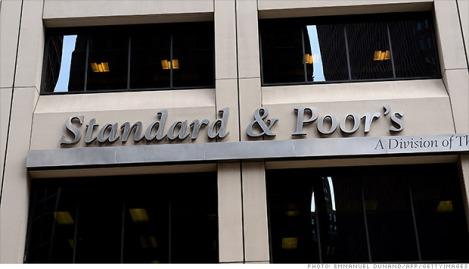Vietnam 'BB-/B' sovereign credit ratings affirmed; outlook stable
Vietnam 'BB-/B' sovereign credit ratings affirmed; outlook stable
Vietnam's low income economy, evolving institutions, and weak fiscal profile are weighed against improving external indicators, including moderate external indebtedness.

We are affirming our 'BB-' long-term and 'B' short-term sovereign credit ratings on Vietnam. We are also affirming our 'axBB+' long-term and 'axB' short-term ASEAN regional scale rating on Vietnam.
The stable outlook balances expectations of continued consolidation against risks of premature policy easing.
Standard & Poor's Ratings Services today affirmed its 'BB-' long-term and 'B' short-term sovereign credit ratings on the Socialist Republic of Vietnam. The outlook is stable. We also affirmed our 'BB-' issue rating on Vietnam's senior unsecured bonds and our 'axBB+' long-term and 'axB' short-term ASEAN regional scale rating on Vietnam. The transfer and convertibility (T&C) assessment remains 'BB-'.
The ratings on Vietnam reflect the country's low-income economy, its weak fiscal position, a developing monetary and financial framework, and the possibility that its evolving policy framework could weaken sovereign risk indicators. Vietnam's external indicators, reflecting moderate liquidity and a modest net narrow external debt level, support its sovereign creditworthiness.
"Vietnam's macroeconomic conditions reflect the government's policy choice, which emphas stability and the need to address structural shortcomings in the banking and state-owned sectors in particular," said Standard & Poor's credit analyst Agost Benard. "Stabilization measures undertaken since 2011 have considerably reduced macroeconomic imbalances, improved confidence in the local currency, and led to somewhat greater perceived policy credibility."
Improved credit metrics indicate a diminished risk of macroeconomic and financial instability. The government has lowered inflation to 6%-7% from over 20% in 2011, and real interest rates have been positive for more than a year.
Sharply reduced credit growth and the ensuing moderation of import demand resulted in a significant turnaround in external balances--with both the trade and current accounts turning to a surplus after a decade of sizable deficits.
The economic rebalancing and associated restructuring do, however, come at the cost of subdued growth, which may eventually test the government's staying power, more so if social pressures emerge.
"We gauge that official commitment to this trade-off is strong for now, and expect further improvements in economic indicators along with incremental progress in reforming the banking and public enterprise sectors," Mr. Benard said.
A low average income, projected at US$2,000 in 2013, remains the main constraint for the sovereign rating on Vietnam. Moreover, we expect growth of this measure to be below historical trends in the next two years, as both private and public sector investment will remain subdued as bank lending slows.
Vietnam's creditworthiness is, however, supported by a moderate and improving external position. The sovereign's external borrowings remain modest, with low cost and long maturity, and we project that gross external debt will remain well below 50% of GDP in the next three years. At the same time, we expect that gross external financing needs will not exceed the sum of current account receipts and usable foreign exchange reserves in this period.
The stable outlook on the ratings reflects our expectation that Vietnam will maintain an appropriately tight economic policy stance that allows banking sector and other reforms to progress while maintaining macroeconomic stability. This would allow fiscal, external, and economic indicators to improve over the next two to three years.
We may lower the sovereign credit ratings if an early easing of the policy stance causes a marked deterioration in one or more key indicators in the above areas. We may raise the ratings if there are indications that Vietnam has developed a capacity to produce per capita real GDP growth above 5.5% per year on a sustainable basis without causing macroeconomic imbalances. A reappraisal of institutional and governance effectiveness, likely based on a track record of greater macroeconomic policy consistency and tangible progress in structural reforms, may also lead to a rating upgrade.
In accordance with our relevant policies and procedures, the Rating Committee was composed of analysts that are qualified to vote in the committee, with sufficient experience to convey the appropriate level of knowledge and understanding of the methodology applicable (see 'Related Criteria And Research'). At the onset of the committee, the chair confirmed that the information provided to the Rating Committee by the primary analyst had been distributed in a timely manner and was sufficient for Committee members to make an informed decision.
After the primary analyst gave opening remarks and explained the recommendation, the Committee discussed key rating factors and critical issues in accordance with the relevant criteria. Qualitative and quantitative risk factors were considered and discussed, looking at track-record and forecasts.
The chair ensured every voting member was given the opportunity to articulate his/her opinion. The chair or designee reviewed the draft report to ensure consistency with the Committee decision. The views and the decision of the rating committee are summarized in the above rationale and outlook.
standardandpoors














